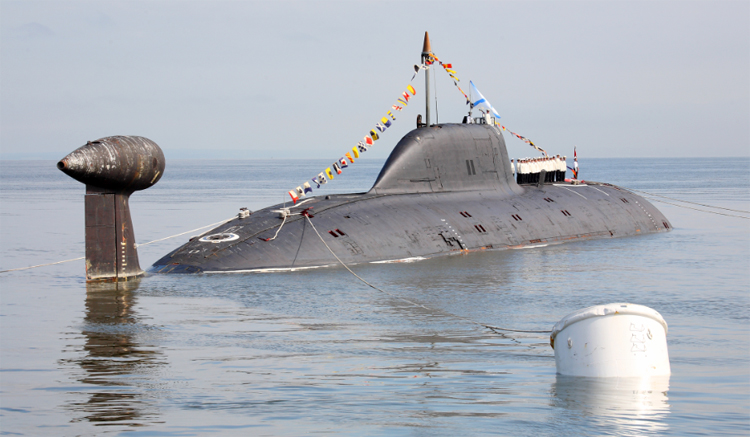INDIAN ARMED FORCES CHIEFS ON OUR RELENTLESS AND FOCUSED PUBLISHING EFFORTS

The insightful articles, inspiring narrations and analytical perspectives presented by the Editorial Team, establish an alluring connect with the reader. My compliments and best wishes to SP Guide Publications.

"Over the past 60 years, the growth of SP Guide Publications has mirrored the rising stature of Indian Navy. Its well-researched and informative magazines on Defence and Aerospace sector have served to shape an educated opinion of our military personnel, policy makers and the public alike. I wish SP's Publication team continued success, fair winds and following seas in all future endeavour!"

Since, its inception in 1964, SP Guide Publications has consistently demonstrated commitment to high-quality journalism in the aerospace and defence sectors, earning a well-deserved reputation as Asia's largest media house in this domain. I wish SP Guide Publications continued success in its pursuit of excellence.
- Global Partners Urged to Tap India's Shipbuilding Potential: Rajnath Singh at Samudra Utkarsh
- All about HAMMER Smart Precision Guided Weapon in India — “BEL-Safran Collaboration”
- India, Germany deepen defence ties as High Defence Committee charts ambitious plan
- G20 Summit: A Sign of Global Fracture
- True strategic autonomy will come only when our code is as indigenous as our hardware: Rajnath Singh
- India–Israel Joint Working Group Meeting on defence cooperation to boost technology sharing and co-development
Indian Navy's Projects 18 & 77
The Indian Navy is aiming for a fleet size of 170 to 175 warships by 2035 as part of its long-term force development strategy
 |
The Author is Former Director General of Information Systems and A Special Forces Veteran, Indian Army |

Indian Navy is planning to acquire a total of 24 submarines, including six nuclear-powered attack submarines (SSNs), as part of a long-term submarine building programme, according to the news reports. This plan, launched in the late 1990s, initially aimed to build 24 submarines by 2030.
Under Project 18 (P-18), next-generation destroyers are being developed that can carry 144 missiles, including BrahMos missiles, and which can track enemy targets 500 km away. In December 2023, the then Vice Chief of Naval Staff had said, "The Indian Navy has started work on building the next generation of more advanced and capable destroyers, and plans for these vessels are already on the drawing board." The Indian Navy's Warship Design Bureau has introduced the P-18 next-generation destroyer concept, which is expected to significantly surpass the size and capabilities of the existing Visakhapatnam-class destroyers.
Under Project 18 (P-18), next-generation destroyers are being developed that can carry 144 missiles, including BrahMos missiles, and which can track enemy targets 500 km away.
The Visakhapatnam-class destroyers, currently the Navy's largest, displace around 7,450 tonnes and are fitted with 48 vertical launch systems (VLS). In comparison, the P-18 under development includes 144 VLS cells that will support a range of missiles for various mission roles. With a displacement of 13,000 tonnes, the next-generation destroyer under P-18 also features advanced radar systems for multi-domain operations, and a focus on indigenous content, enhancing India's naval power.

The missile configuration of 144 VLS cells, for supporting layered defence and strike roles, includes the following: 32 VLS cells at the stern that are dedicated to the under-development PGLRSAM, a long-range surface-to-air missile with a range of 250 km, intended to intercept enemy aircraft and ballistic missile threats; 48 VLS cells to house the BrahMos extended-range supersonic cruise missile and the Indigenous Technology Cruise Missile, both intended for anti-ship and land-attack missions; 64 VLS cells allocated for very short-range surface-to-air missiles, acting as the final defensive layer against aerial and anti-ship missile threats.
The next-generation destroyer features four active electronically scanned array (AESA) radars, developed by the Defence Research and Development Organisation (DRDO), integrated into the superstructure. The radar suite includes an S-band active array as the primary radar, a volume search radar, and a multi-sensor mast, providing 360-degree degree surveillance and tracking of aerial and surface threats. The systems, jointly developed by DRDO and Bharat Electronics Limited (BEL), reportedly have a range exceeding 500 km.
The Cabinet Committee for Security (CCS) has cleared the project worth ₹40,000 crore to construct two nuclear attack submarines for the Indian Navy under P-77.
The next-generation destroyer, with 75 per cent of indigenous content, will be capable of operating two multi-role helicopters, launching autonomous underwater drones, and carrying out anti-submarine warfare operations. In December 2023, the Indian Navy had said that the broad time-frame was about five years to sign the contract, followed by all deliveries under the P-18 contract to be completed and within five to 10 years.
Indian Navy's Project 77 (P-77), formerly called Project 75 Alpha, is an acquisition programme to procure nuclear-powered attack submarines - SSNs. These new domestically built submarines will be third in the class of SSN operated by the Indian Navy after the leased Charlie I and Akula II-class submarines. In 1999, a plan was conceived for the construction of a dozen submarines to be constructed by 2012 with another dozen to be inducted by 2030. However, with no submarines inducted until 2015, the government changed the targets to six nuclear-attack and 18 diesel-electric submarines.
The Indian Navy confirmed that it plans to operate six SSNs; initial two to be completed by 2036-37, followed by the next in 2038-39.
On October 9, 2024, the Cabinet Committee for Security (CCS) cleared the project worth ₹40,000 crore to construct two nuclear attack submarines for the Indian Navy under P-77, to be built at the Ship Building Centre in Visakhapatnam and will include major private sector firms including Larsen and Toubro (L&T). According to reports, the first submarine will take 10–12 years to be launched with a 190 MW pressurised light-water reactor and a displacement of almost 10,000-tonnes. These SSNs are mum with speed will be over 30 kn (56 km/h). The submarines will feature an indigenous content of 95 per cent and foreign assistance will include design consultancy only.

The Indian Navy confirmed in a press conference that it plans to operate six SSNs; initial two to be completed by 2036-37, followed by the next in 2038-39. The submarines are anticipated to be equipped with DRDO-developed hypersonic missiles and an upgraded BrahMos, which may have a strike range of 1,500–2,000 km.
The general characteristic of the submarines under P-77 include: Type – nuclear attack submarine; Displacement – 10,000 tonnes (9,800 long tonnes, 11,000 short tonnes); Propulsion – 1 x CLWR-B2 (Compact light-water reactor) 190 MW (250.000 hp) 1 x single shaft pump-jet pressurised light water reactor developed by the Bhabha Atomic Research Centre (BARC); Range – unlimited except for food supplies; Armament - Varunastra heavyweight torpedo, Nirbhay, BrahMos and BrahMos-II land-attack/anti-ship cruise missiles.
The SSNs under Project 77 are to feature manned-unmanned operational concepts, integrating advanced unmanned underwater vehicles (UUVs) like the 20-tonne JALKAPI-XLUUV.
The SSNs under Project 77 are to feature manned-unmanned operational concepts, integrating advanced unmanned underwater vehicles (UUVs) like the 20-tonne JALKAPI-XLUUV. Adoption of this concept will enhance the capabilities of the Indian Navy considerably; both submarine and carrier group capabilities, aligning India with global powers with advanced underwater warfare capabilities. The submarines are designed to perform a range of missions, including anti-submarine warfare, anti-surface warfare, intelligence, surveillance and reconnaissance (ISR), strike missions and mine warfare. The advanced propulsion system, which also incorporates pump-jet technology akin to the French, and stealth features like natural-circulation reactor cooling will make them formidable assets against the enemy, like China's Type-093 SSNs.

According to the media reports of July 29, 2025, the Ministry of Defence (MoD) has approved the development of 100-tonne extra-large UUVs – XLUUVs for the Indian Navy, allocating a budget of ₹25.28 billion ($290 million). These XLUUVs, being developed by the DRDO, will serve a wide range of missions, including long-duration deep sea surveillance, intelligence gathering, mine-laying operations, and anti-submarine warfare (ASW). These XLUUVs will provide the Indian Navy tremendous flexibility in monitoring, power projection, and operating effectively in contested waters of the Indo-Pacific region. In addition, the proposed 500-tonne XLUUV will be a major milestone in India's undersea warfare capabilities. Designed to operate in tandem with manned submarines or independent platforms, these unmanned vessels are likely to feature high endurance, low acoustics signature and advanced AI-based navigation and targeting systems. Concurrently, the Indian Navy has also initiated a case for a 20-tonne UUV as part of a layered underwater defence system.





